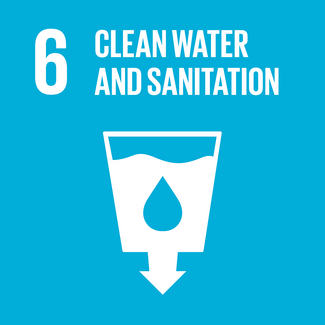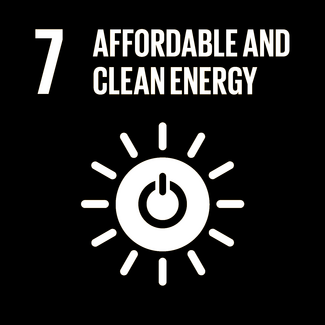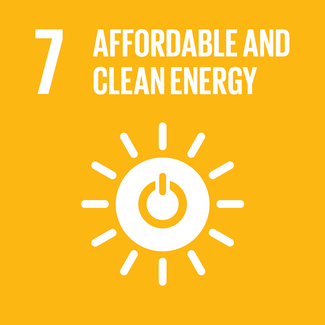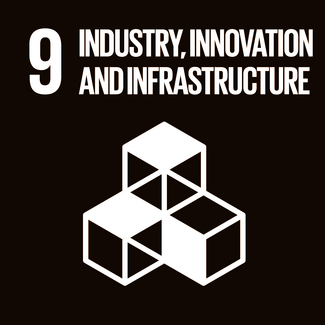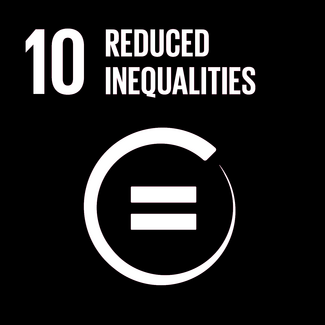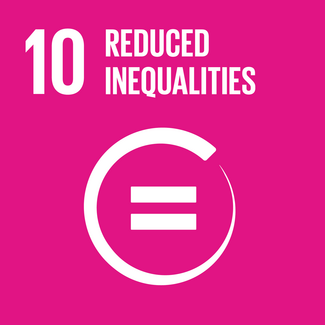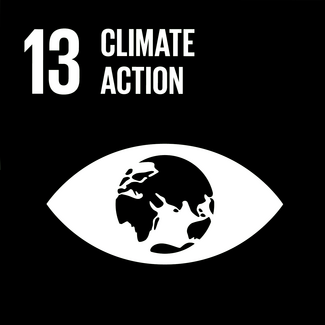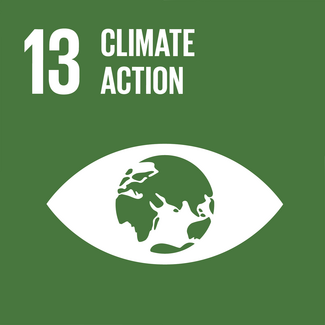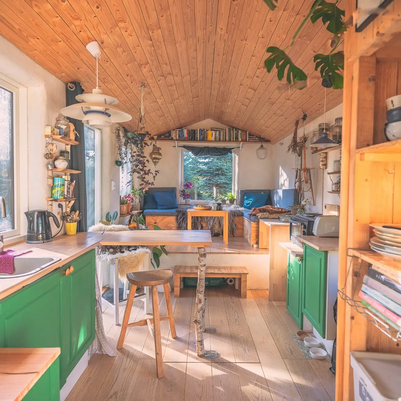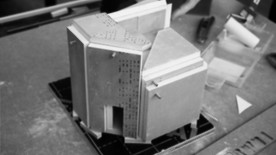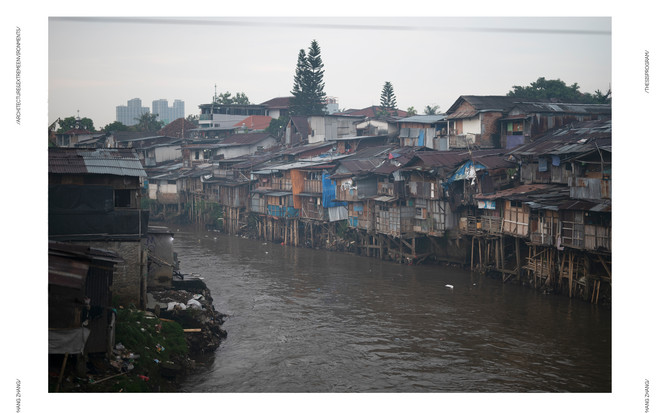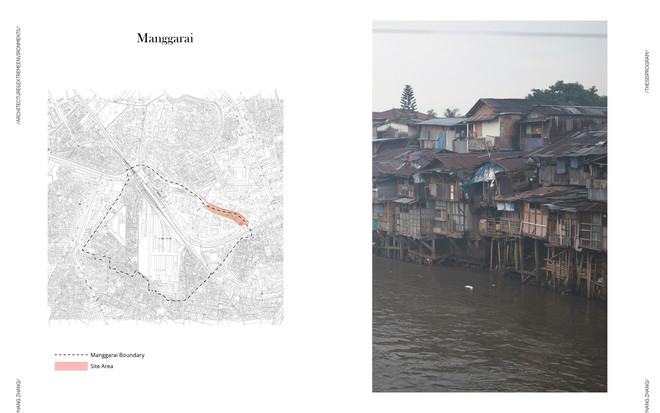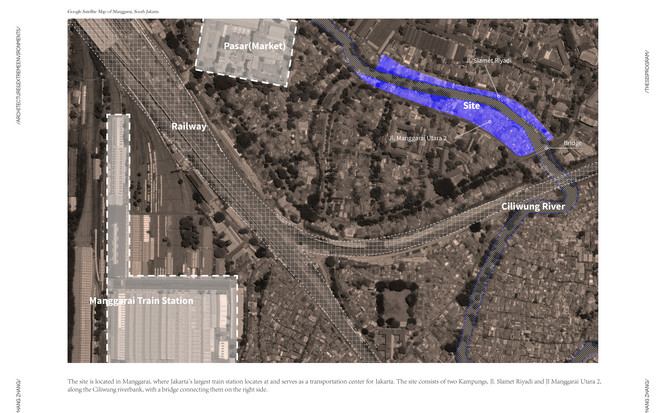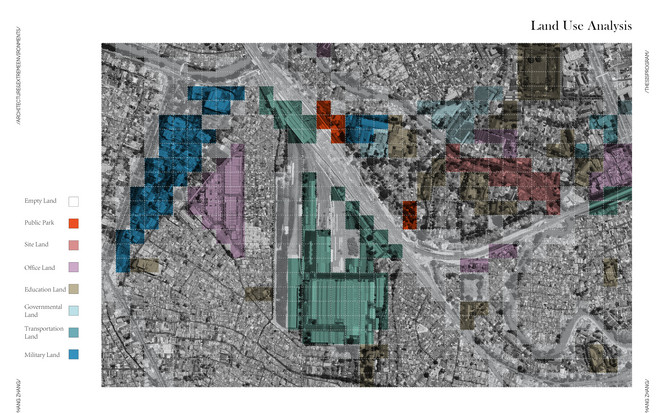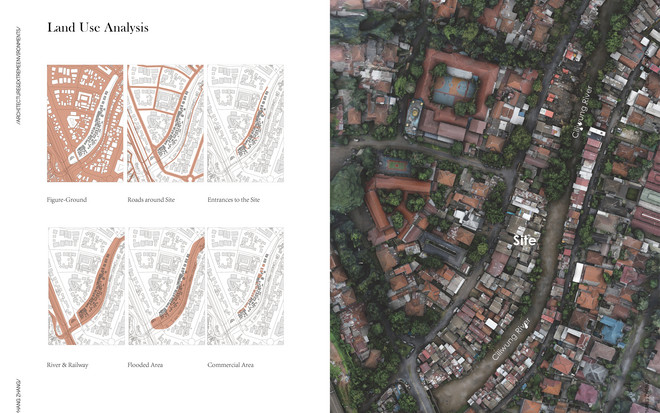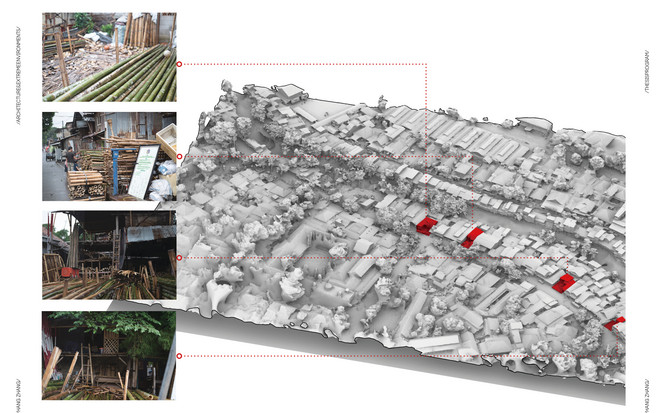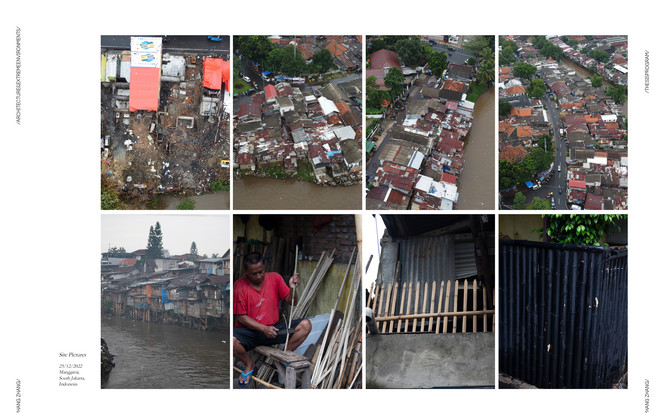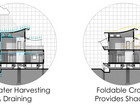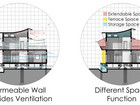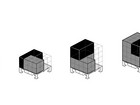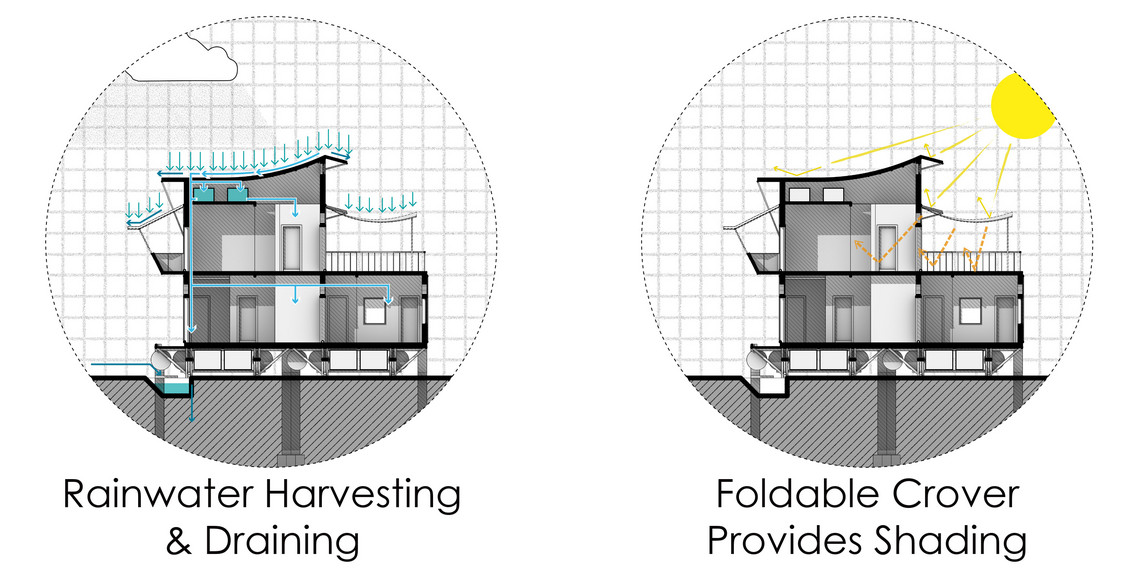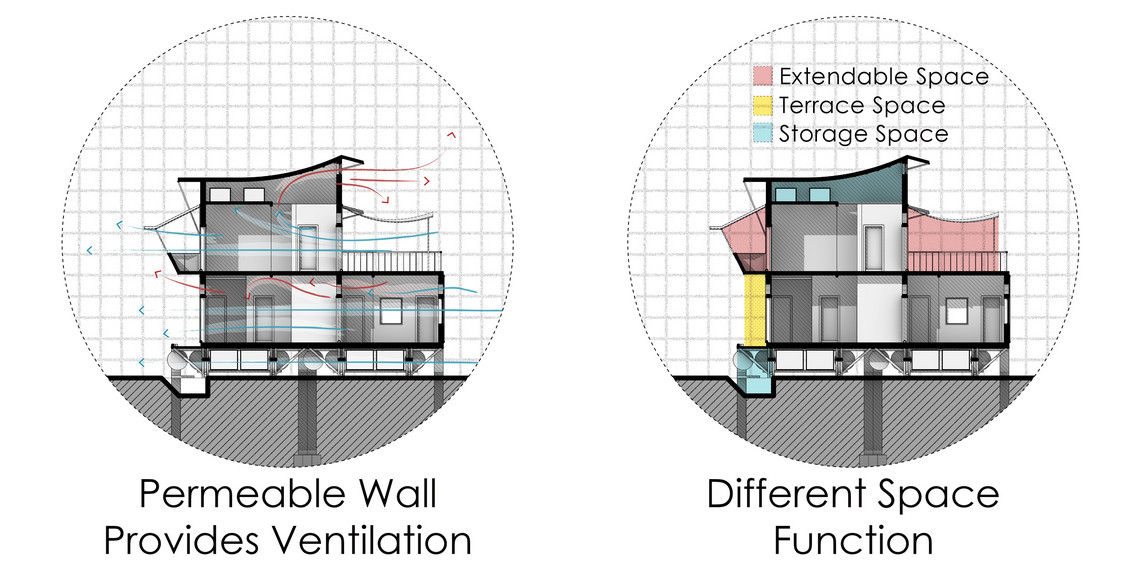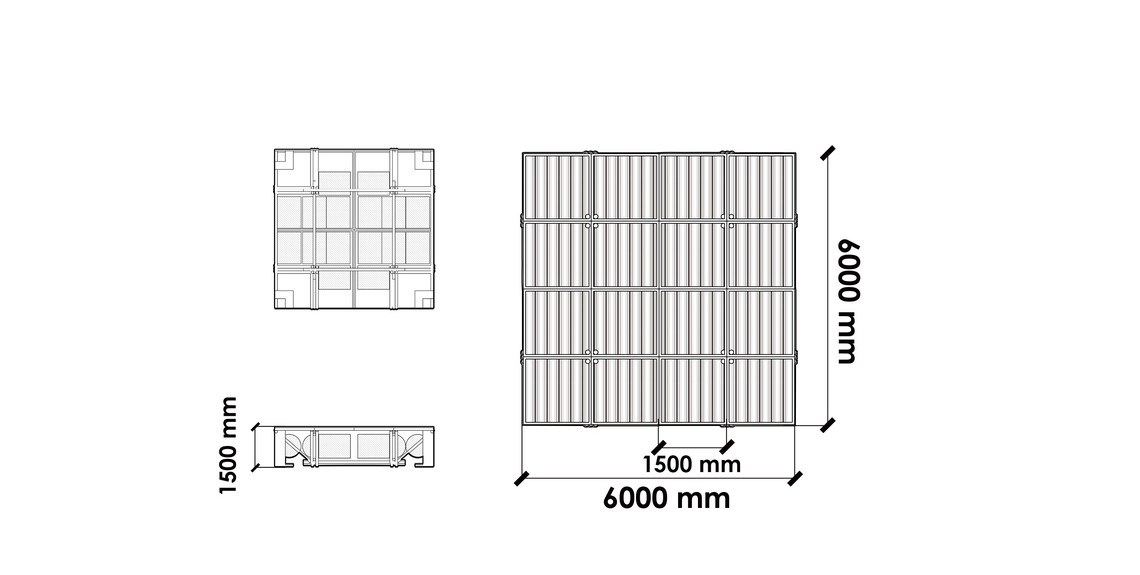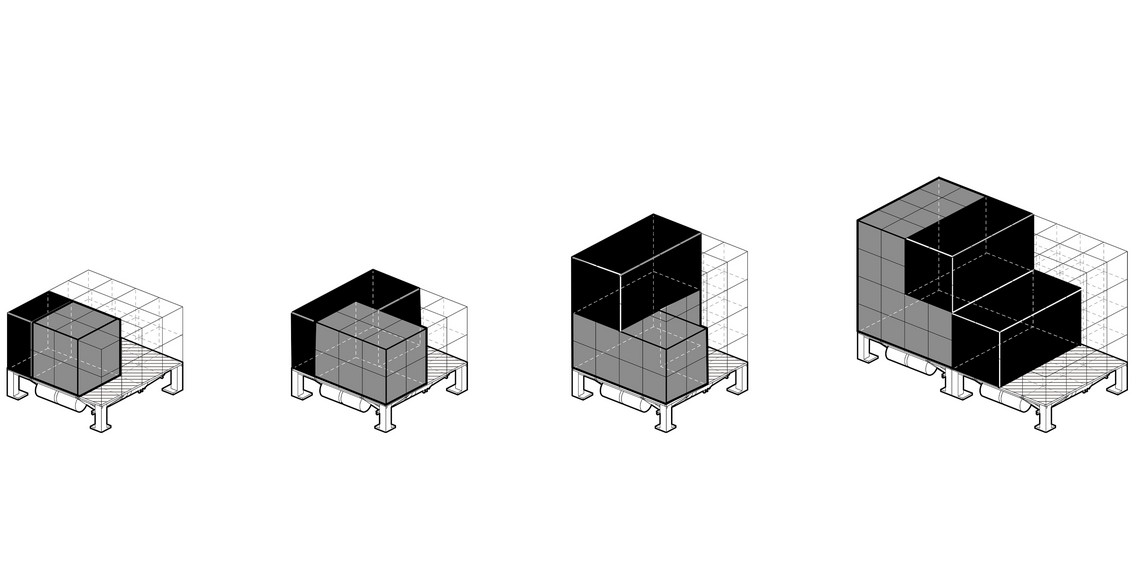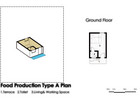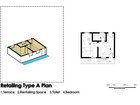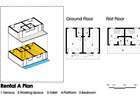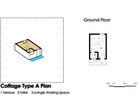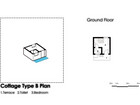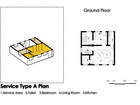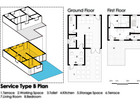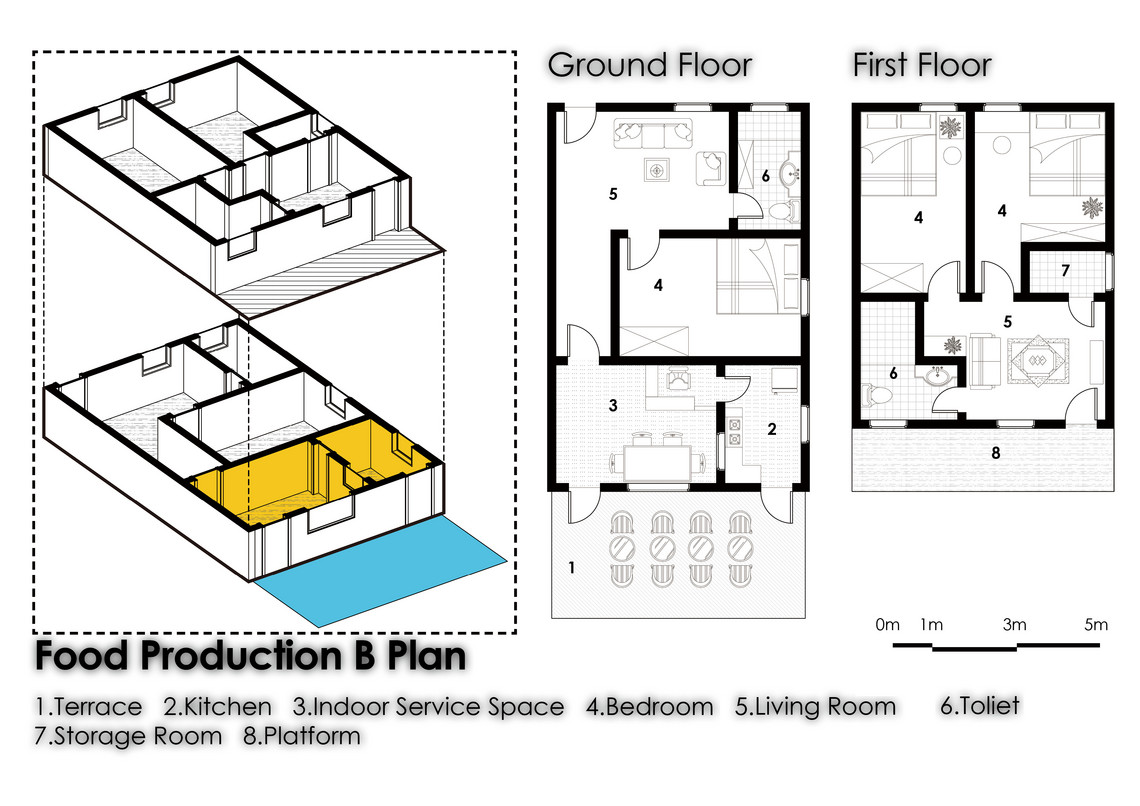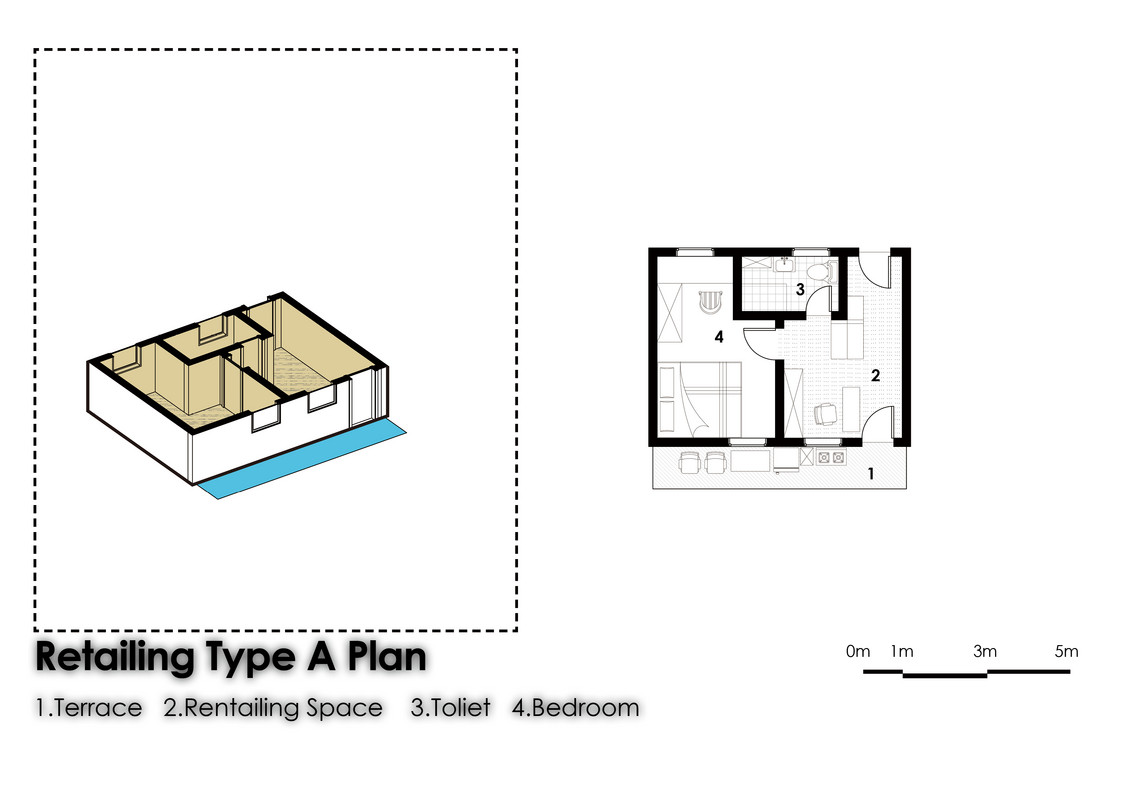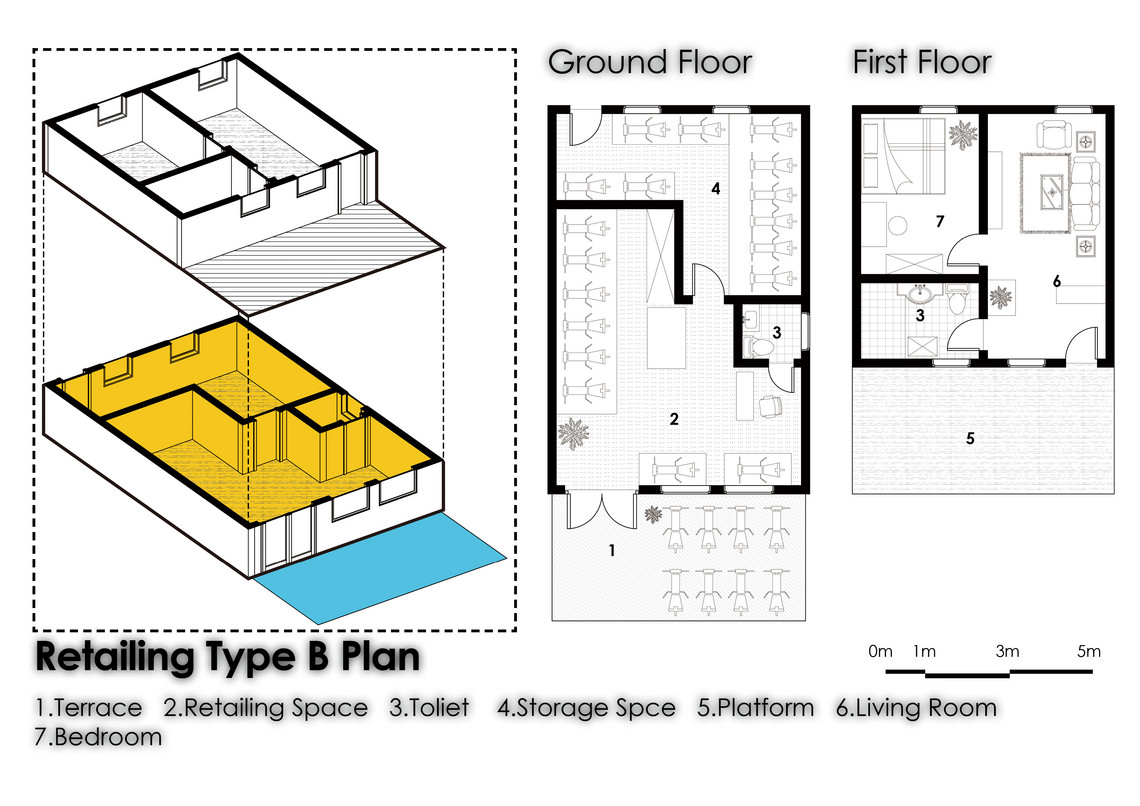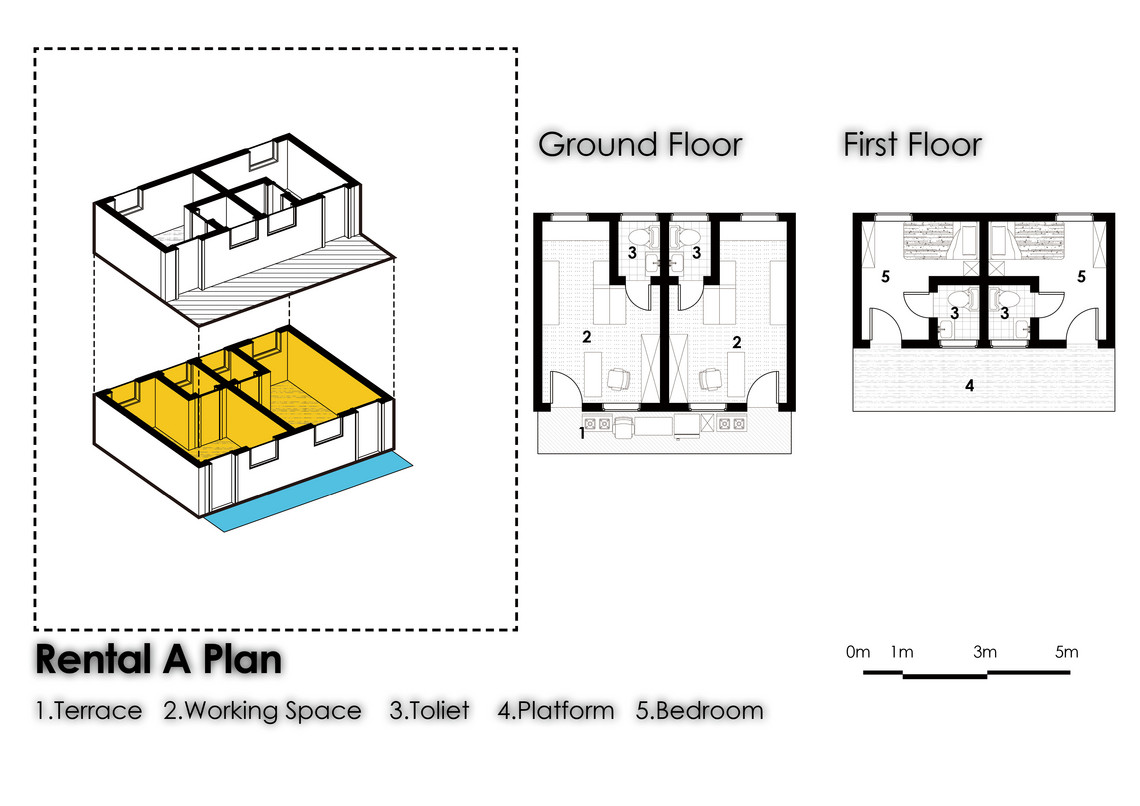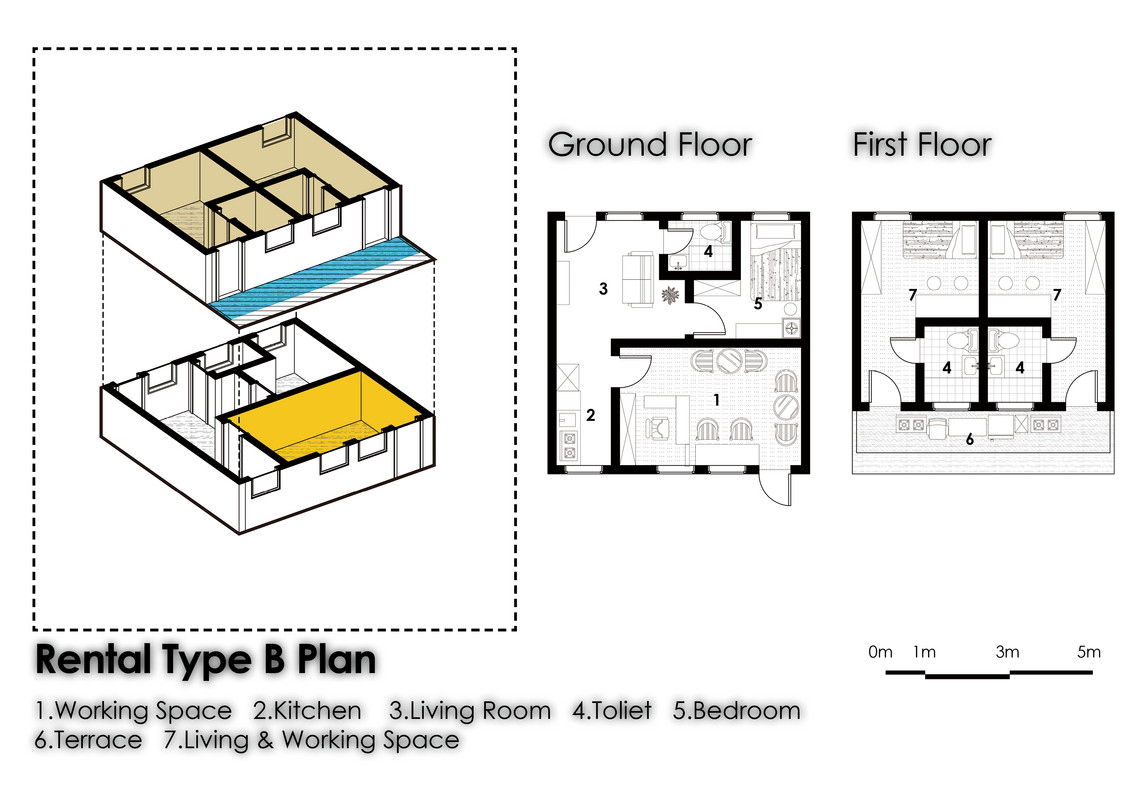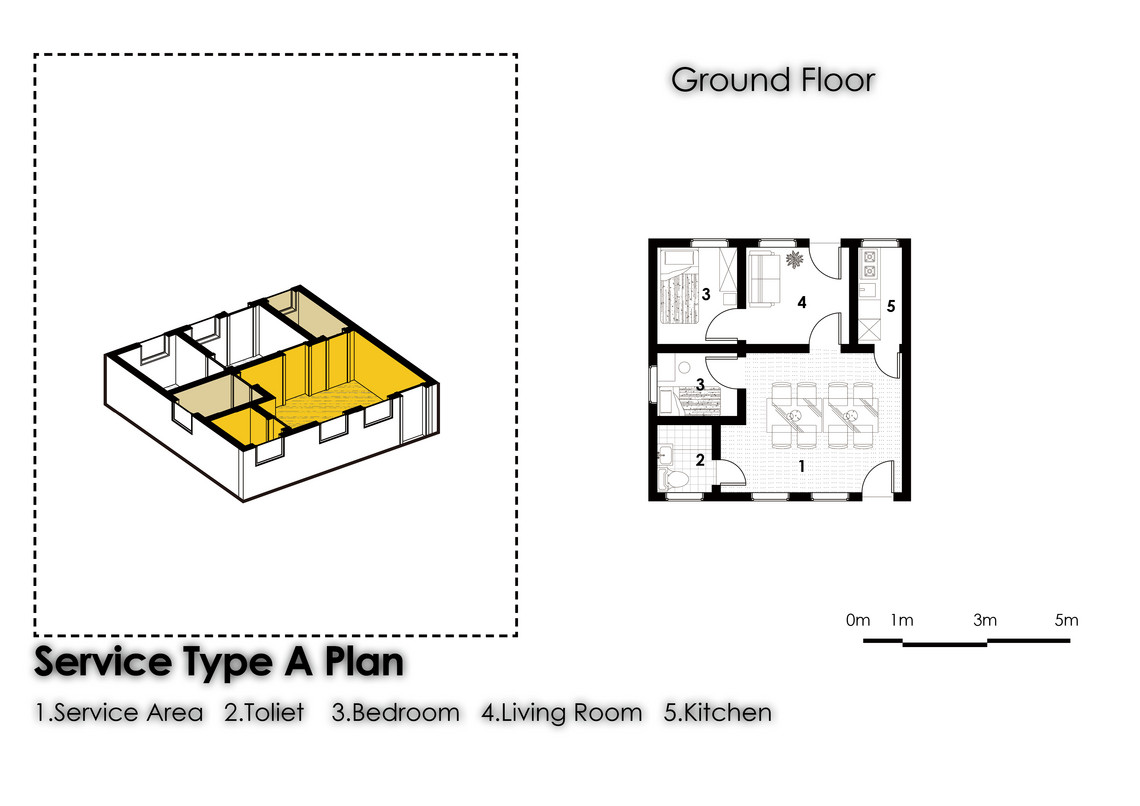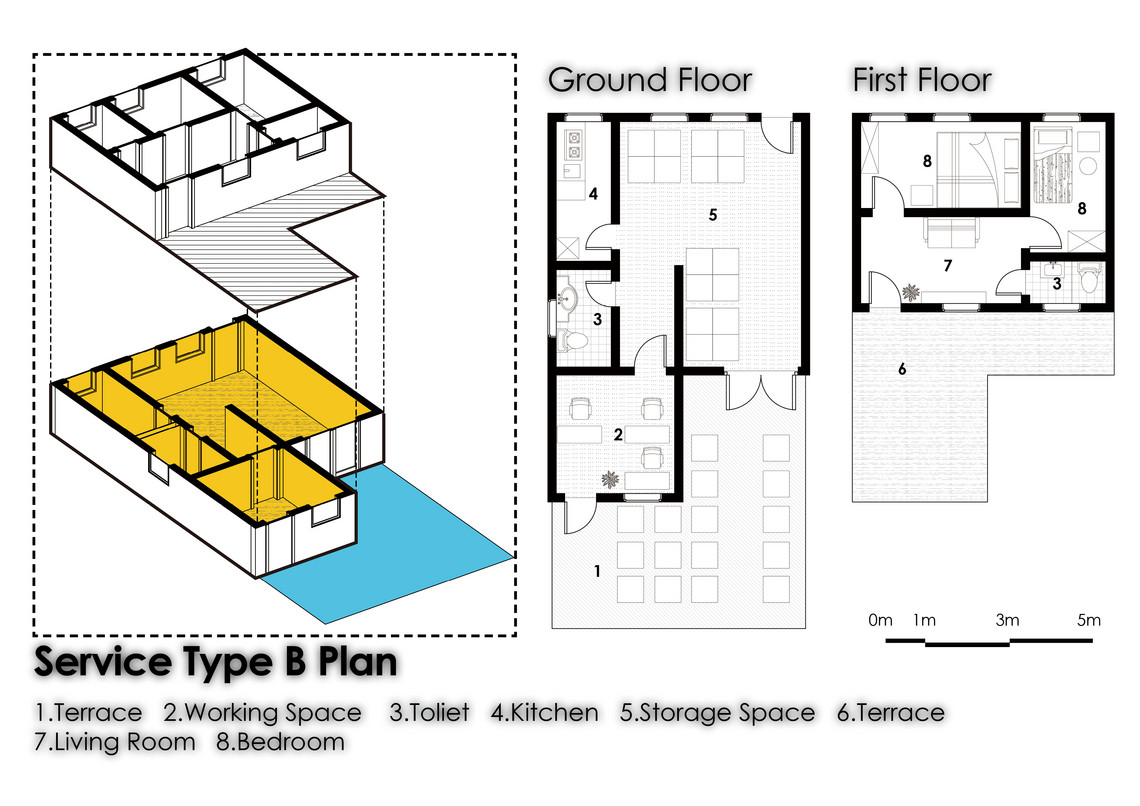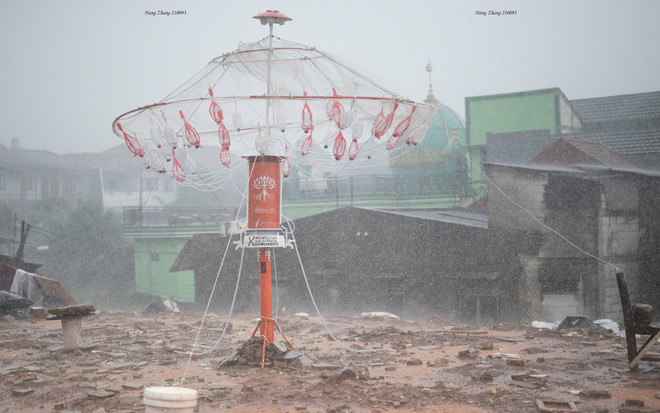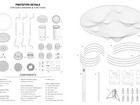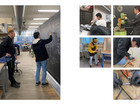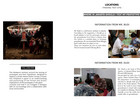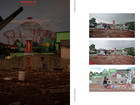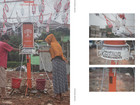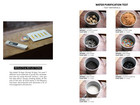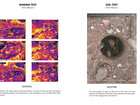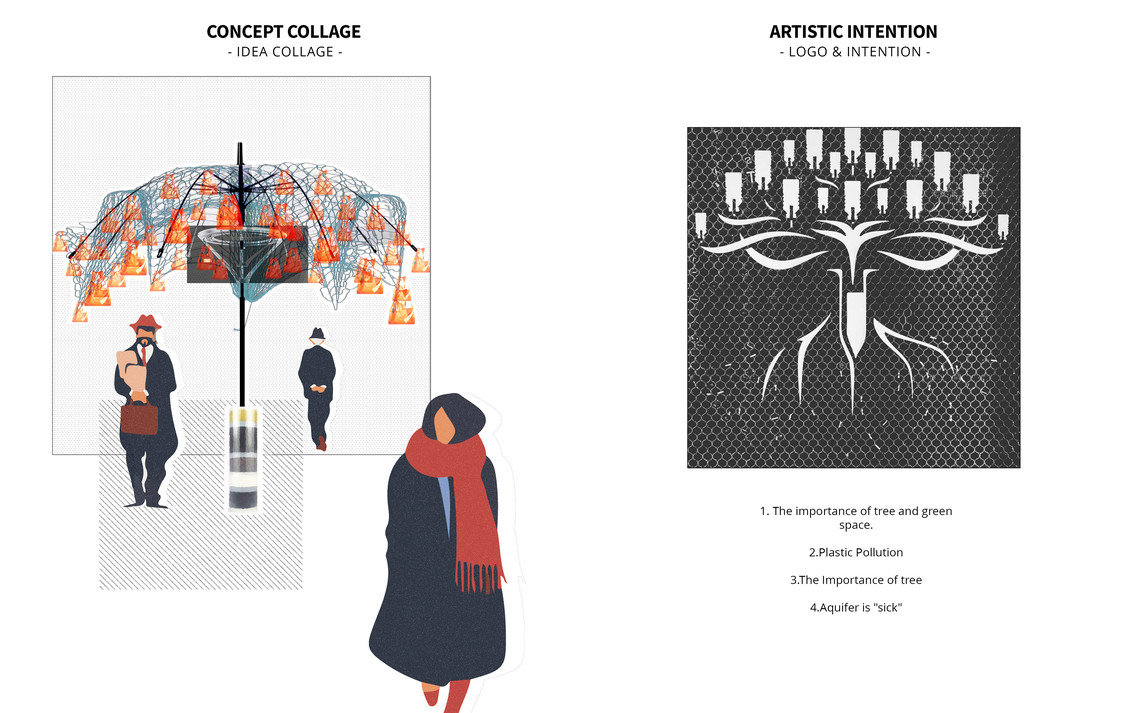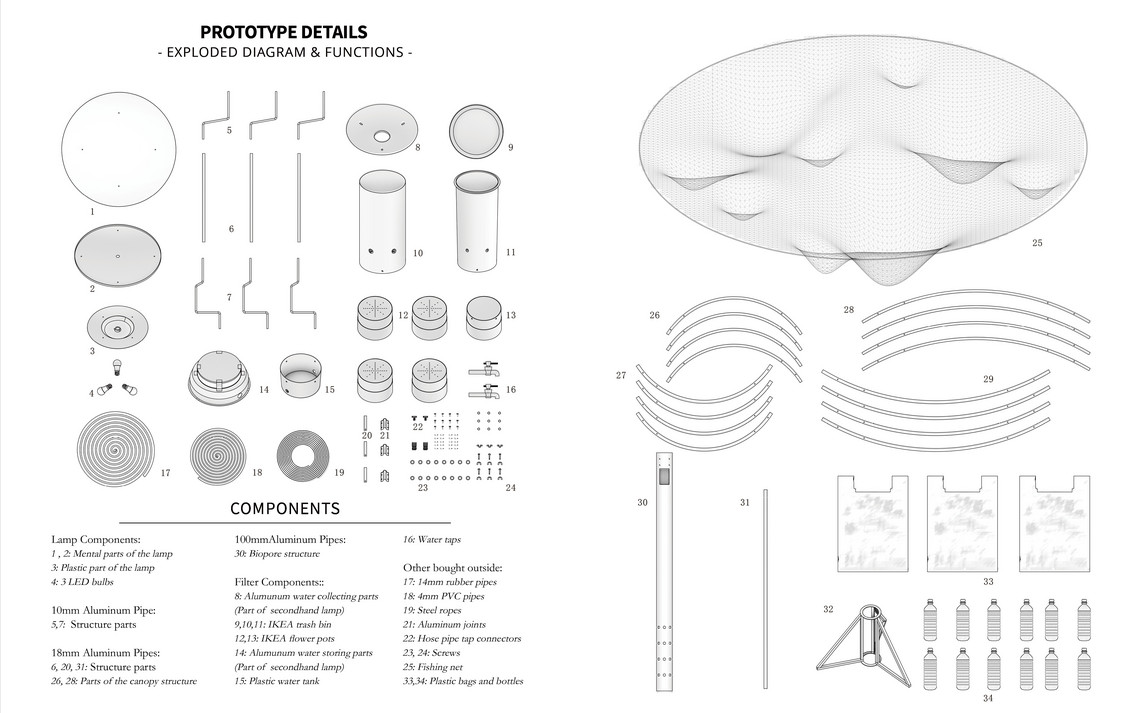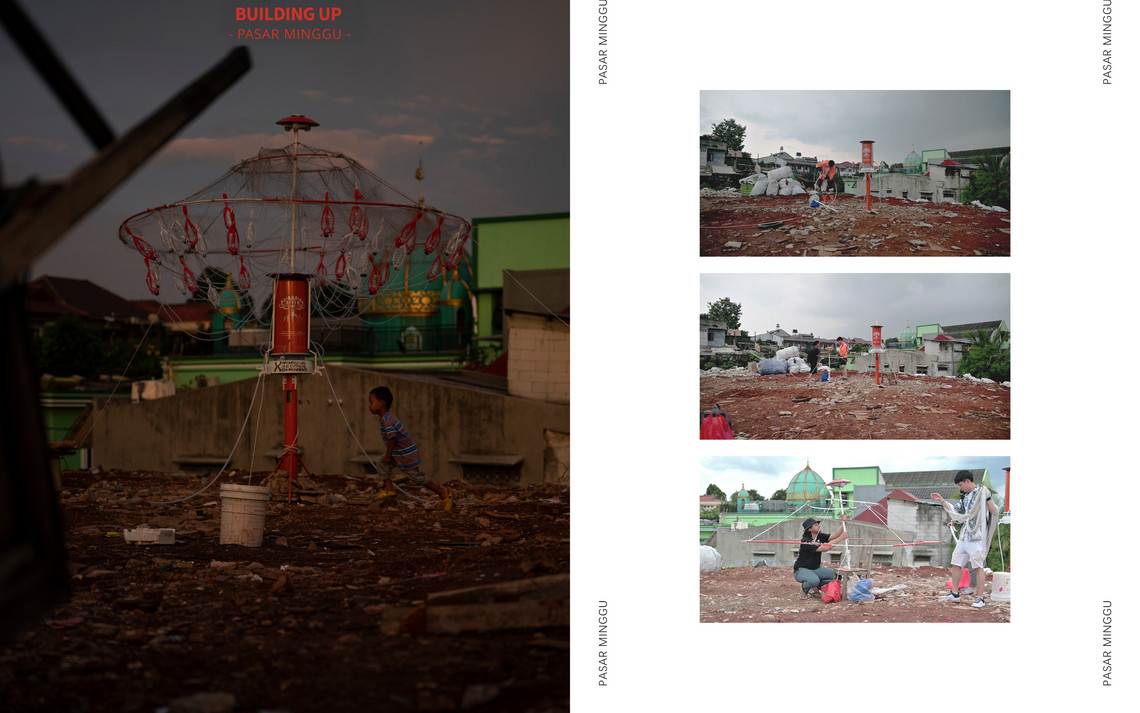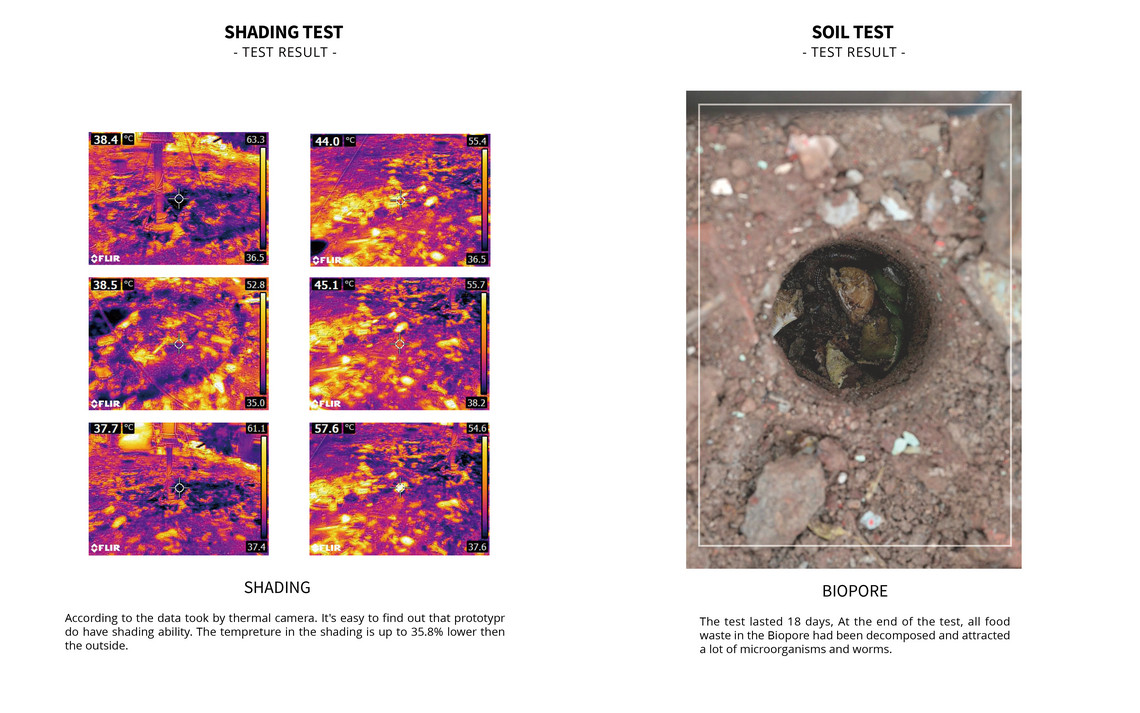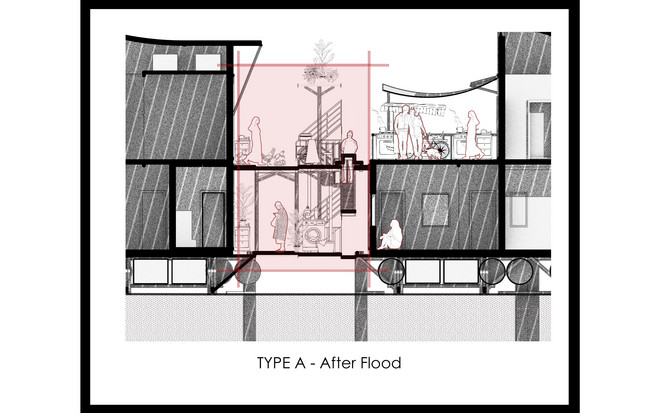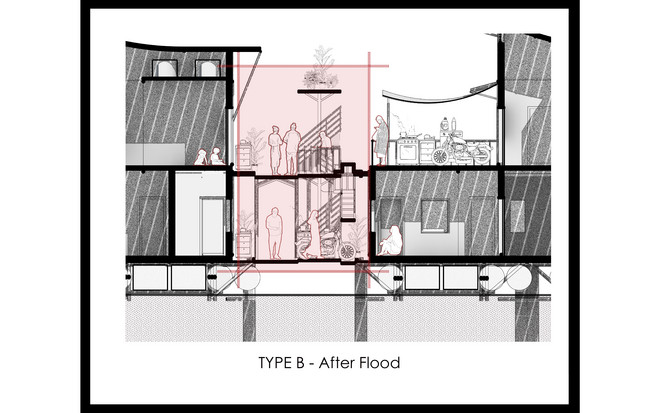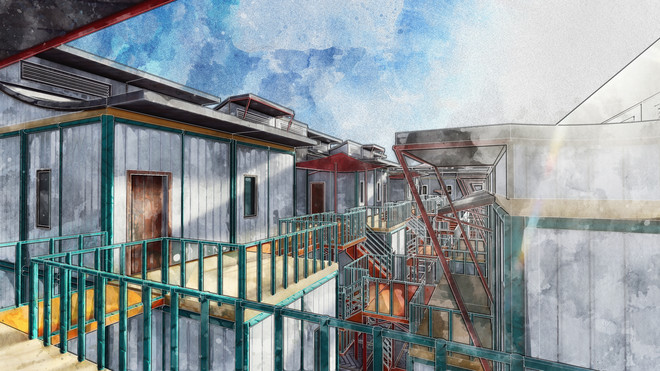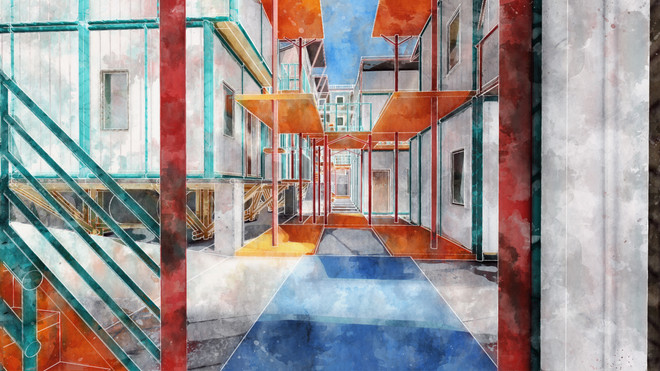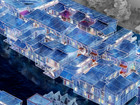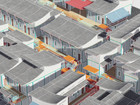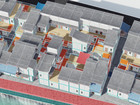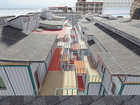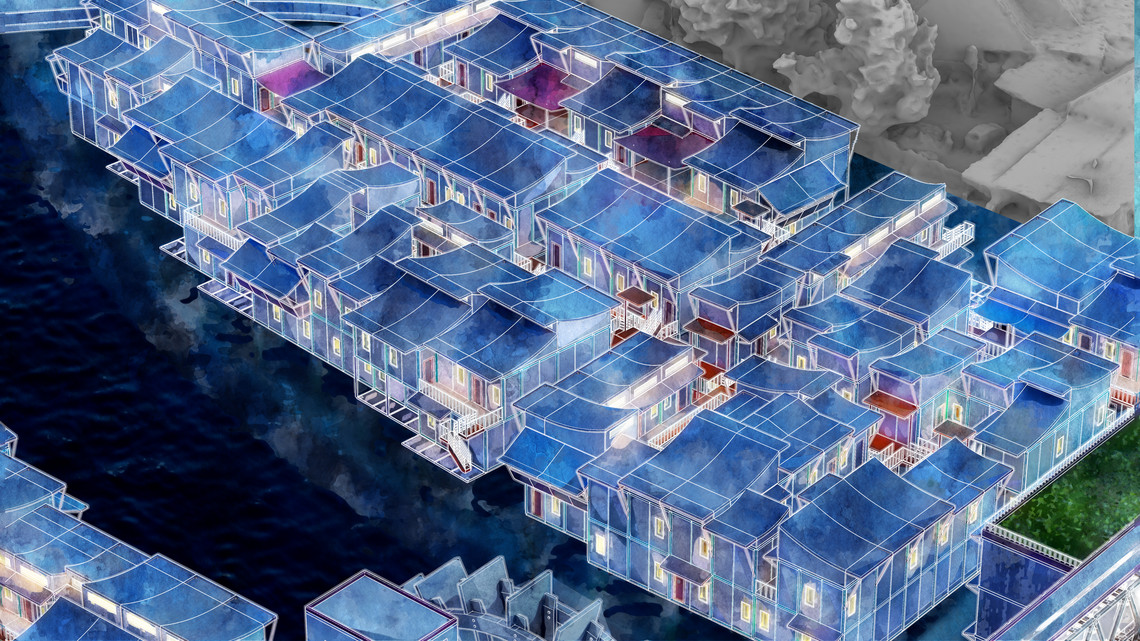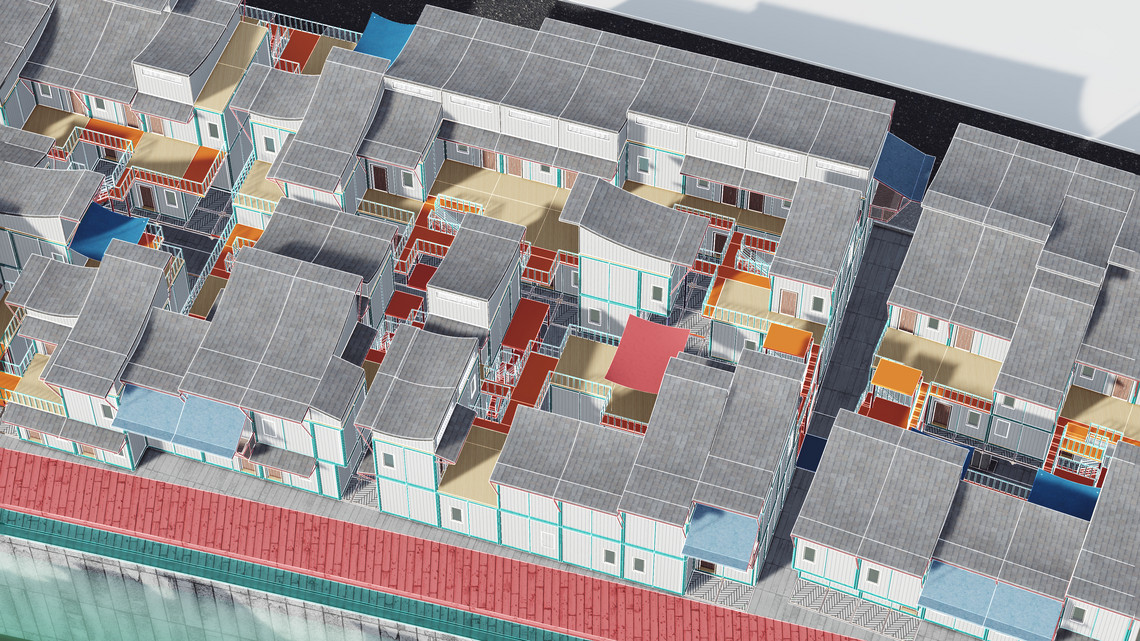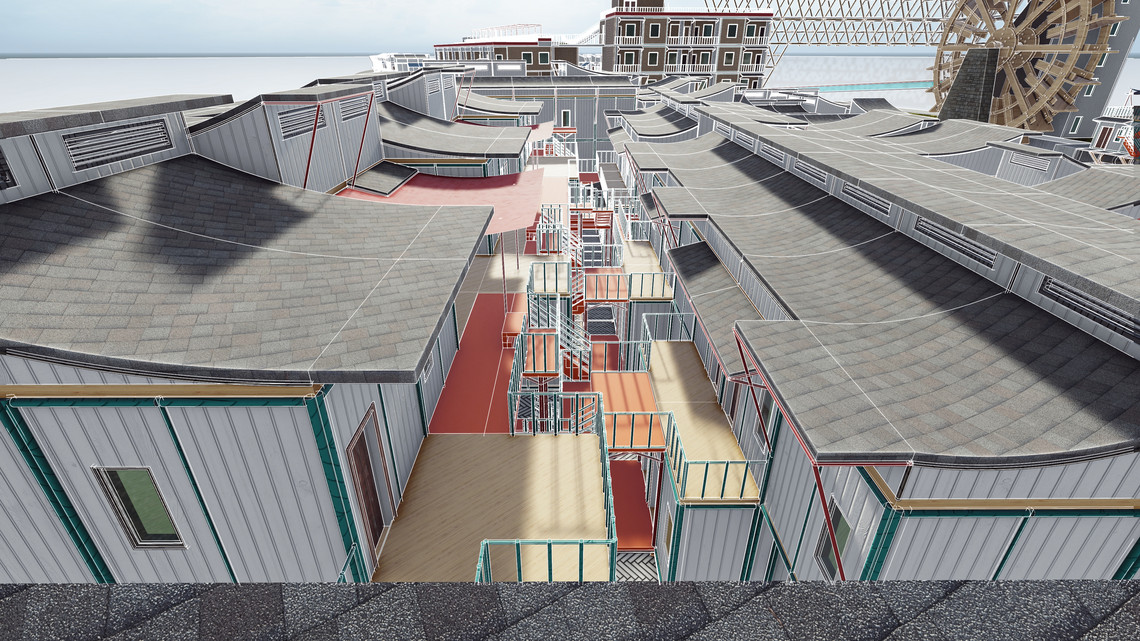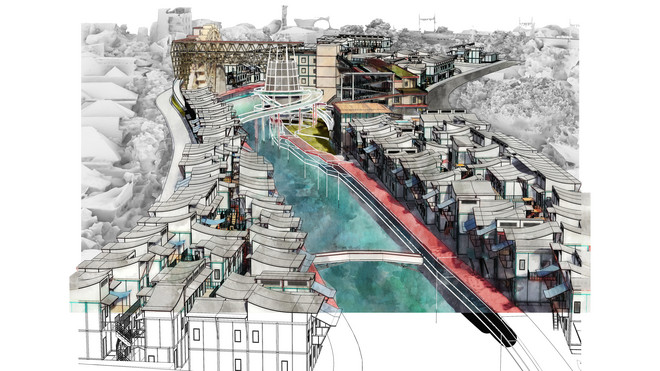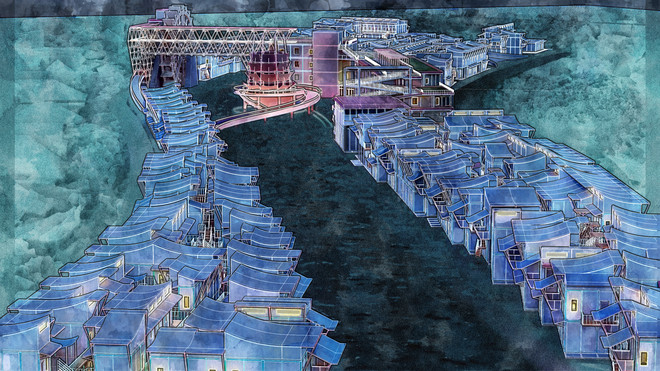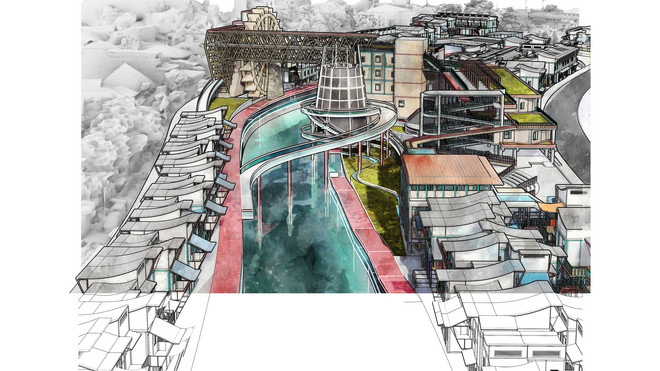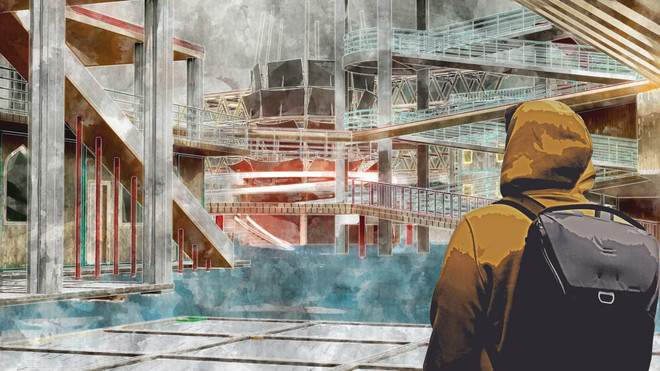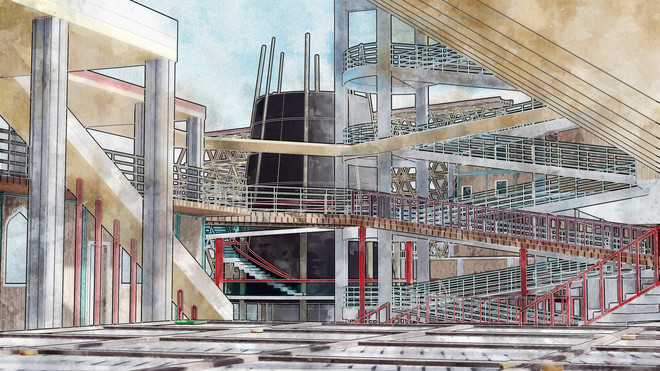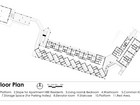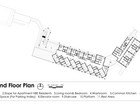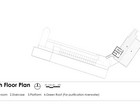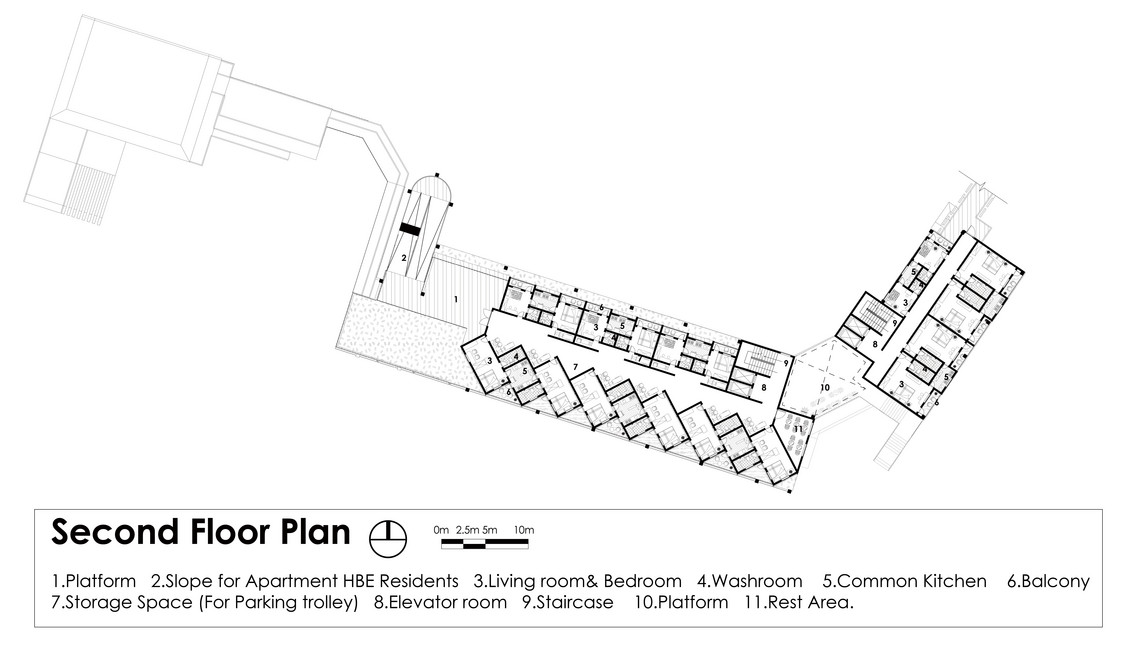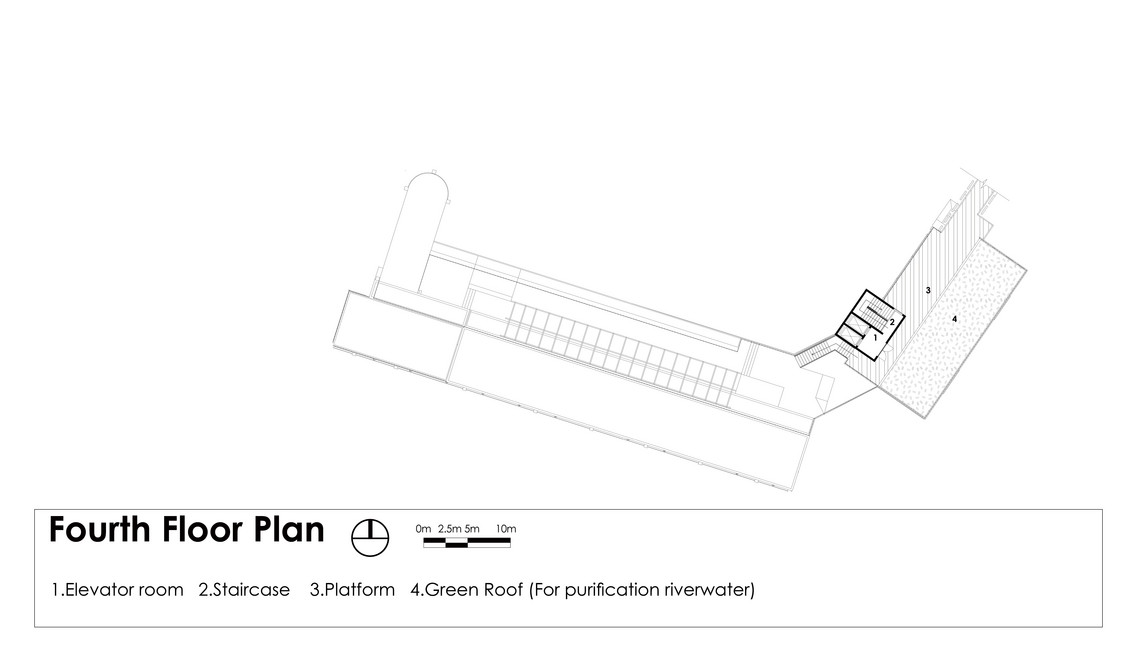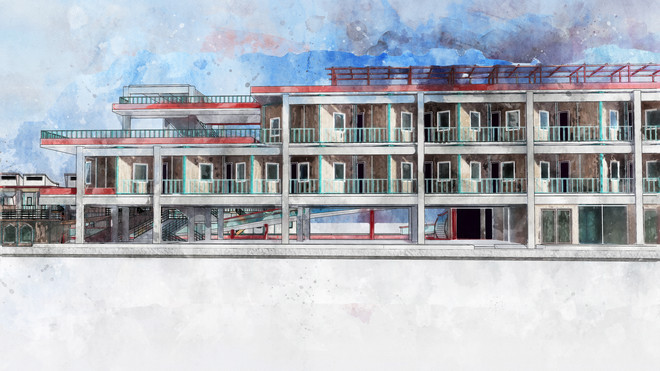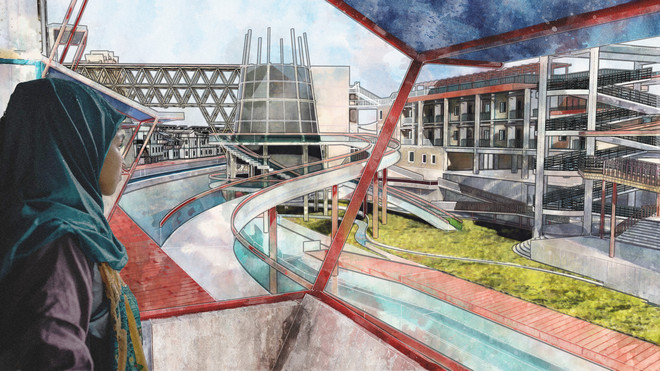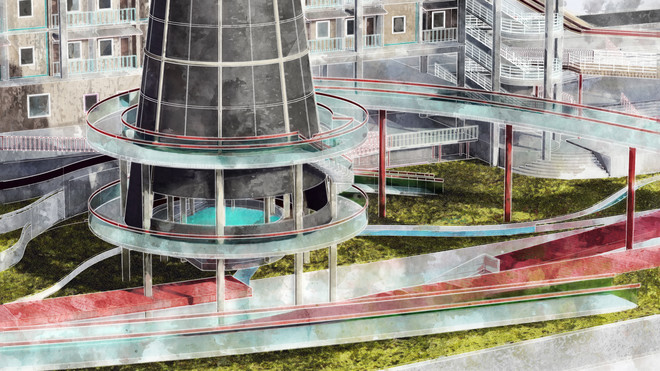
Live with water - A flood-resilient kampung design based on Indonesian Gotong-Royong culture
Frequent floods afflict Jakarta, especially kampungs by Ciliwung River. Despite challenges, a policy called Ciliwung Normalization aims to widen the river, remove illegal buildings, and relocate residents. The proposal is an amphibious modular housing system reflecting local Gotong-Royong values, which fosters unity in kampungs. Houses will float and bind post-floods, preserving community integrity.
What is a kampung?
A kampung is a traditional Indonesian village or urban neighborhood known for its communal lifestyle, traditional architecture, and strong sense of community, especially in densely populated urban areas.
In Jakarta, kampungs are vibrant and densely populated urban communities featuring traditional housing and close-knit social structures. Amidst the bustling metropolis, these neighborhoods provide a window into Indonesia's cultural heritage and resilience. However, they frequently face challenges such as inadequate infrastructure and the risk of flooding.
Context
RAPID URBANIZATION, IMMIGRANTS & FLOOD
Rapid urbanization in Jakarta has worsened flooding by replacing natural permeable surfaces with concrete and asphalt, which diminishes the land's ability to absorb rainfall.
Data indicates that over the past 50 years, Jakarta's population has grown significantly, averaging an increase of 2.4% per year. Despite this growth, the majority of Jakarta's residents, approximately 60–70%, live in kampungs. (Jakarta urban challenges in a changing climate, World Bank, 2010)
ILLEGAL RESIDENTS & INFORMAL ECONOMY - HBE (home-based enterprise)
Today, many remaining kampungs in the inner city are often stigmatized as slums due to their dense population, sub-standard housing, and lack of basic infrastructure. These kampungs are frequently located in hazardous areas, such as flood-prone zones along major canals or riverbanks. Since many of these locations are government-owned, the residents are often considered illegal occupants.
Most urban kampung dwellers participate in the informal economy, engaging in revenue-generating activities outside the legal framework. Approximately 38% of Jakarta's economy operates informally.
A home-based enterprise (HBE) is defined as any business entity that sells products or services in the market, operated by a self-employed person or with employees, using their residential property as the base of operations.
CILIWUNG NORMALIZATION POLICY
The Ciliwung Normalization Policy aims to restore the river's width to 35-50 meters, increasing its water holding capacity from 200 m³/second to 570 m³/second. Originally initiated in 1973, this project is a continuation of the post-flood policy following the severe flooding in Jakarta on January 17, 2012. The normalization efforts include strengthening riverbanks, constructing embankments, building inspection roads 6-8 meters wide along the river, and reorganizing the surrounding areas.
Summary & Hypothesis
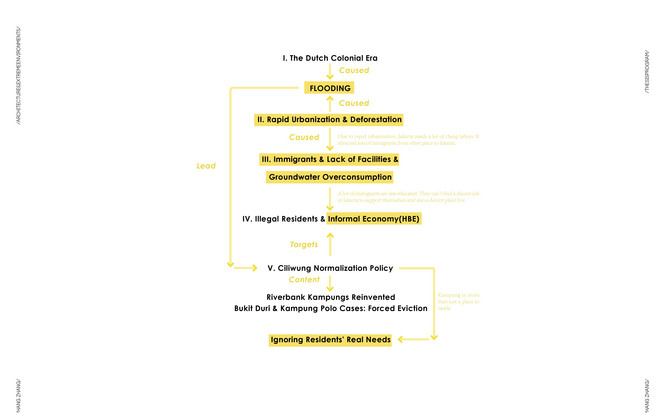
CURRENT POLICY IGNORES THOSE RIVERSIDE RESIDENTS' REAL NEEDS
Research indicates that 28% of households near the river and 22% of households away from the river in Bukit Duri opposed the normalization efforts. The low-cost apartments (Rusunawa) provided by the local government to those displaced by forced evictions offer only a place to live. However, for the residents, their kampung represents much more than just a place to reside.
- Many residents in the kampung earn their livelihoods here, living and working within the kampung.
- While many kampung residents are considered to have illegally occupied public land, they have resided there since birth, with deep roots and a network of family and friends.
- The cost of living in the kampung is low, and residents can adapt their homes to accommodate changing family sizes.
- For many riverside kampung residents, floods are not a threat. They have learned to coexist with the river. However, after their forced eviction, the new flood defenses have severed the interaction between people and the river, including activities like fishing and swimming.
HYPOTHESIS
The government wants to reduce floods. However, the riverside kampung residents don't want to leave.
Is it possible to mitigate the flood on-site without eviction?
Gotong-Royong Culture
Jakarta Gotong-Royong is a community-based initiative in Jakarta, Indonesia, designed to foster solidarity and cooperation among residents to address local challenges. Rooted in Indonesian culture, Gotong-Royong emphasizes mutual assistance and collective action for the greater good. In Jakarta, it involves residents collaborating to clean up neighborhoods, maintain public spaces, and tackle issues such as waste management and flood prevention.
This grassroots movement not only enhances the physical environment but also strengthens social bonds and promotes a sense of ownership and responsibility among residents towards their city's well-being.
Site Study
The site is combined by two kampungs located along the Ciliwung River, Kampung Jl. Slamet Riyadi and Kampung Jl. Manggarai Utara. Around 1985, the residents' ancestors immigrated from other parts of Java to Jakarta, where most of them have lived since birth, making a living primarily through informal economic activities (HBE). Similar to the residents of Kampung Bukit Duri, they are also considered illegal occupants of public land. They have already received two letters from the government, and they are soon to face the same fate as people from Bukit Duri, being forcibly evicted and relocated due to the Ciliwung River Normalization Policy, even though they are very much unwilling to do so.
Proposal
AMPHIBIOUS MODULAR HOUSING SYSTEM
Flood will isolate different families away from each other. Inspired by local Gotong-Royong culture, the proposal sees flood no longer as a risk. With the amphibious modular housing system, the kampung will be reshaped by the flood - houses can float like boats while it's flooding and different families can be connected with each other to offer help when it's needed.
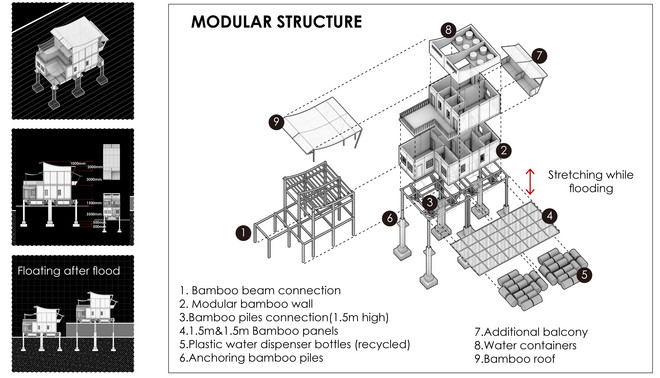
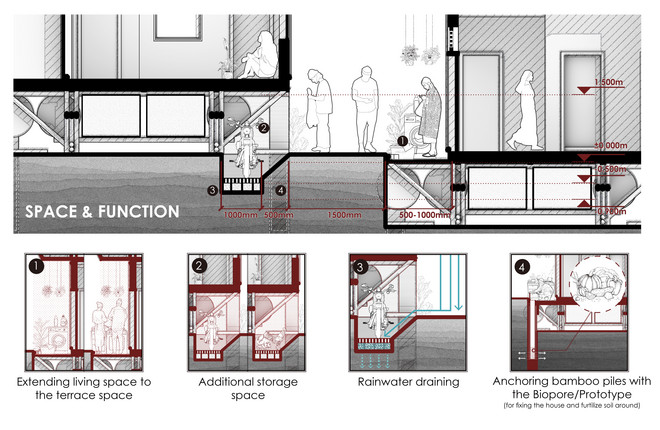
PROTOTYPE - ARTIFICIAL TREE
During the prototype phase, I endeavored to explore various avenues to mitigate the impact of flooding. Two critical aspects emerged: firstly, the collection and reuse of rainwater to reduce residents' reliance on groundwater; secondly, inspired by biopore technology, the utilization of food waste to attract insects and microorganisms, thereby enhancing soil permeability and fertility. This makes the soil more suitable for planting and reduces surface water accumulation.
How is the prototype reflected in the architecture?
The proposal involves integrating the two prototype elements with architectural structures. I combined rainwater collection and purification with the building's rooftop design. Additionally, I integrated biopore technology with the ground connections of the amphibious housing system. This not only facilitates the reuse of food waste but also increases green space within the residential area, consequently reducing road flooding.
BOX SPACE IN KAMPUNG STREET
"The residents' seemingly trivial and ubiquitous activities happen directly on the street instead of inside the house." - Kampung Kota: between The Diversity Ideal and The Unslumming (Medium)
Therefore, the street is the most energetic space in the kampung. Due to the limited indoor space, most kampung residents choose to extend their working or living spaces outside to the street, like using terrace spaces along the street as kitchen or laundry spaces.
However, because of lacking storage space, kampung residents tend to park their trolleys and motorbikes in the street, which makes streets even more narrow. And also because of lacking waste treatment facilities, with many residents working in food production-related HBE, the sanitation of the kampung street is also a problem.
Box spaces are combined by two parts that attach to different houses along street sides. It could provide more spaces for the residents to use and could space-change while it's flooding to provide more storage space and connect different houses together.

VERTICAL KAMPUNG & FLOOD PLAIN PARK
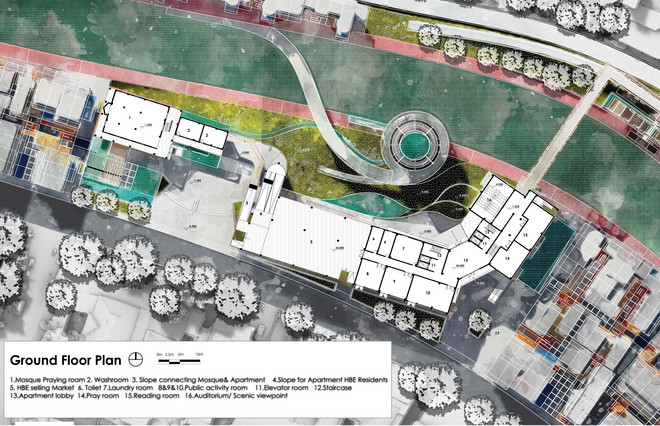
Det Kongelige Akademi understøtter FN’s verdensmål
Siden 2017 har Det Kongelige Akademi arbejdet med FN’s verdensmål. Det afspejler sig i forskning, undervisning og afgangsprojekter. Dette projekt har forholdt sig til følgende FN-mål
